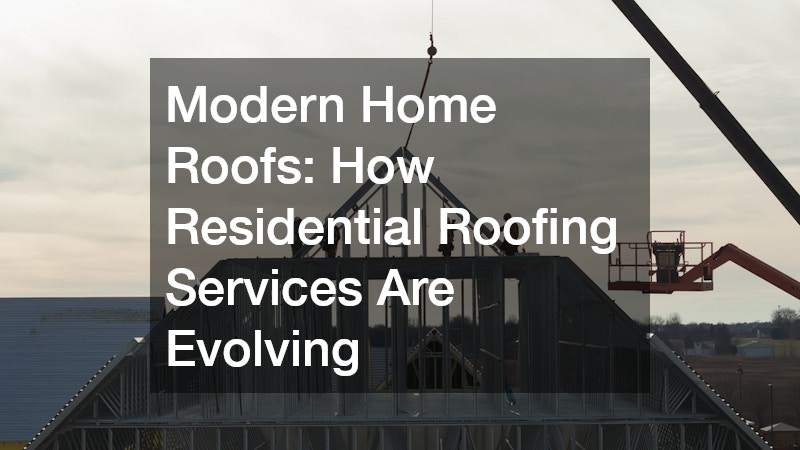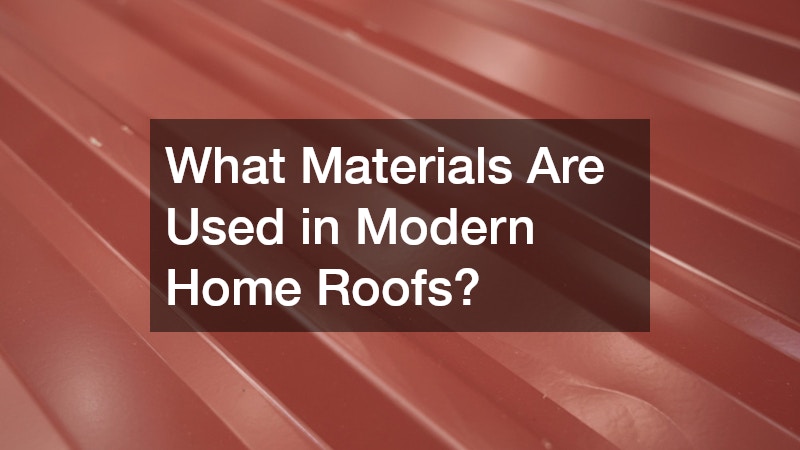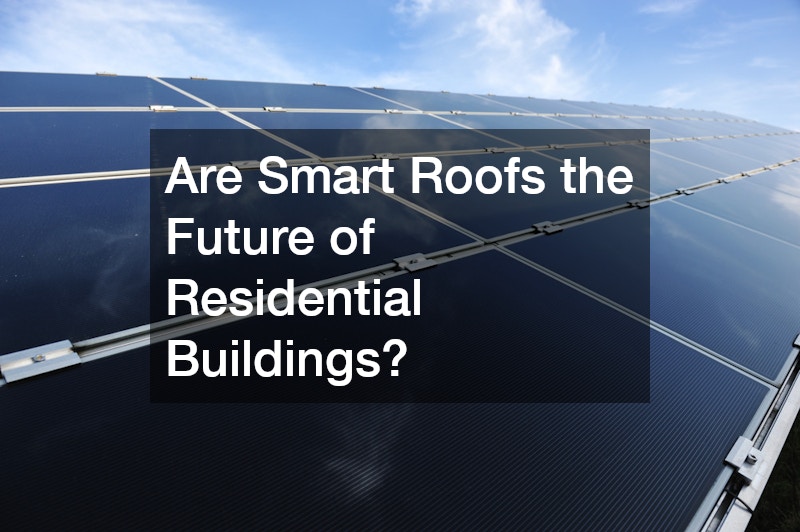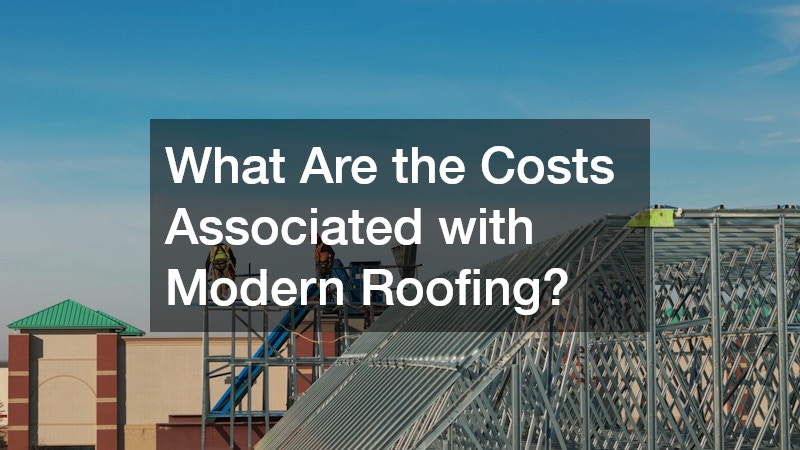
Modern Home Roofs How Residential Roofing Services Are Evolving
Modern Home Roofs: How Residential Roofing Services Are Evolving
In today’s world of smarter, greener, and more design-conscious living, one part of the home is undergoing a quiet yet profound revolution: the roof. Traditionally seen as a simple shield against the elements, the modern roof has transformed into a vital element of a home’s overall functionality and appeal. From boosting energy efficiency and supporting renewable energy systems to contributing to storm resilience and enhancing curb appeal, modern home roofs are now multifaceted systems that integrate performance, sustainability, and style.
This shift hasn’t happened in isolation. As homeowners demand more from their properties—whether it’s reduced utility costs, environmentally responsible materials, or sleek, contemporary designs—roofing companies and contractors have had to adapt. Residential roofing services have become more sophisticated, offering innovative solutions that go far beyond basic installation. These services now include detailed energy analyses, smart technology integration, and custom architectural planning that aligns roofing with broader home construction goals.
Whether you’re constructing a new property, renovating an older house, upgrading a manufactured home, or seeking long-term value from roof repair services, understanding how the modern roofing landscape is changing is essential. This evolution touches every aspect of the industry—from the materials used to the tools employed during installation, and even how roofing systems contribute to home automation and climate adaptation.
In this article, we’ll explore the current and emerging trends that are redefining what residential roofing means in today’s housing market. From sustainable materials and smart technologies to aesthetic trends and climate-responsive designs, you’ll gain insight into how roofing contractors and companies are reshaping the future of home construction—starting from the top down.
What Materials Are Used in Modern Home Roofs?
Sustainable Roofing Materials
Modern homeowners are increasingly drawn to sustainability, and roofing materials are following suit. Options like recycled metal, reclaimed slate, and sustainably harvested wood are becoming more mainstream. These eco-friendly materials help reduce the environmental impact of home construction without compromising performance or aesthetics.
Traditional Materials with Modern Performance
Clay tiles, asphalt shingles, and cedar shakes are still widely used, but innovations in manufacturing have improved their durability, energy efficiency, and fire resistance. Modern asphalt shingles, for example, are now available in reflective variants that help reduce solar heat gain—an important factor in both warm and mixed climates.
Innovative Composite Materials
Synthetic composites are gaining traction as alternatives to traditional roofing products. These materials often blend rubber, plastic, and polymers to create lightweight, durable, and low-maintenance roofing solutions. They mimic the appearance of natural materials while offering improved resistance to weather, mold, and pests.
How Do Modern Roof Designs Enhance Energy Efficiency?
Role of Insulation in Energy Efficiency
Today’s roofing systems often incorporate advanced insulation materials that help regulate indoor temperatures more effectively. Proper insulation minimizes heat transfer, lowering energy bills and enhancing overall home comfort.
Cool Roofing Technologies
Cool roofs are designed to reflect more sunlight and absorb less heat than standard materials. These systems can be especially effective in urban settings and warm climates, reducing the need for air conditioning. Cool roof coatings, often applied by roofing contractors during maintenance or upgrades, contribute to improved energy performance.
Integration with Renewable Energy Systems
A standout feature of modern home roofs is their compatibility with renewable energy. Many residential roofing services now offer options for seamless solar panel integration, often without disrupting the aesthetics of the roofline. Solar shingles—an innovation that merges roofing and power generation—are also becoming a popular request among eco-conscious homeowners.
What Are the Current Trends in Roof Design Aesthetics?
Minimalist and Sleek Designs
Clean lines and subtle roof profiles are in demand as modern architecture embraces minimalism. Low-slope and flat roofs, once reserved for commercial buildings, are increasingly seen in custom homes and high-end residential designs. These designs often require specialized roof repair services due to their unique drainage needs.
The Rise of Green Roofs
Green or living roofs, which support plant life atop buildings, offer both beauty and functionality. They provide natural insulation, manage stormwater, and promote biodiversity. While more common in urban environments, they’re also being adapted for residential use, especially with the support of roofing companies experienced in ecological design.
Technologically Integrated Roofs
With smart home systems on the rise, many roofers are incorporating tech-ready elements such as integrated lighting, climate sensors, and antennae. These features are often installed during initial construction or as part of a retrofit, allowing homeowners to optimize everything from energy use to home security.
Are Smart Roofs the Future of Residential Buildings?
Introduction to Smart Roof Systems
Smart roofs incorporate sensors and connectivity to monitor weather conditions, structural health, moisture levels, and more. These roofs communicate with home automation systems, offering real-time insights into their performance.
Benefits of Smart Roofs
Beyond the wow factor, smart roofing systems can alert homeowners to leaks before they cause major damage, track energy efficiency, and even adjust ventilation systems automatically. This proactive maintenance reduces the need for emergency roof repair services and prolongs roof lifespan.
Challenges and Considerations
While smart roofs offer many advantages, they do come with higher upfront costs and may require specialized roofing contractors for installation and ongoing support. Compatibility with existing home systems and regional climate conditions is also an important factor to weigh.
How Are Roofing Technologies Adopting Sustainability?
Eco-friendly Manufacturing Processes
Many roofing manufacturers are shifting toward greener production methods, such as using recycled content and low-emission adhesives. Residential roofing service providers are aligning with these practices, offering products that support LEED certifications and other green building standards.
Energy Conservation Features
Modern roofing isn’t just about keeping out rain—it plays a major role in conserving energy. Features like solar-reflective granules, thermal barriers, and ventilated roof decks help reduce energy use across all seasons, cutting utility costs and lowering a home’s carbon footprint.
Waste Reduction and Recycling Initiatives
A growing number of roofing contractors are embracing jobsite recycling programs. Shingle recycling, for instance, diverts tons of waste from landfills and repurposes materials for road construction. Roofing companies also coordinate with homeowners to repurpose tiles or metal panels during remodels or tear-offs.
What Is the Impact of Climate on Modern Roof Designs?
Adapting to Extreme Weather Conditions
Today’s roofs are being engineered to withstand more intense climate events, including hurricanes, hailstorms, wildfires, and heatwaves. Innovations such as wind-resistant fasteners, fire-retardant coatings, and impact-resistant shingles are essential in high-risk areas.
Climate-specific Roofing Solutions
Roofing contractors often tailor material recommendations based on geographic region. In snowy climates, for example, metal roofing is favored for its snow-shedding capabilities. In the sunbelt, clay or concrete tiles that reflect sunlight and resist UV damage are more common.
Global Climate and Local Adaptations
As climate patterns shift, roofing contractors must think long-term. This includes evaluating the potential for rising temperatures, changing precipitation levels, and the increased likelihood of natural disasters—all of which influence material selection and installation techniques.
How Do Modern Roofing Services Enhance Durability?
High-Performance Coatings
Protective coatings applied to shingles or metal panels can drastically extend a roof’s lifespan. These coatings guard against UV rays, algae growth, and water intrusion. Roofing service providers use them as part of preventative maintenance or post-installation upgrades.
Enhanced Structural Integrity
Modern roofs are being designed with a focus on structural resilience. Improved underlayments, ventilation systems, and fastener technologies contribute to a longer-lasting roof that can better withstand environmental stress.
Long-term Maintenance Solutions
Today’s roofing companies often offer scheduled maintenance plans, which include inspections, minor repairs, and cleaning. These services help catch issues early—such as loose flashing or cracked sealants—and prevent expensive replacements later on.
What Are the Costs Associated with Modern Roofing?
Upfront Versus Long-term Costs
Modern roofing materials and technologies may come with higher upfront costs, but they often deliver significant savings over time through reduced energy bills, longer lifespans, and lower maintenance needs. Homeowners are increasingly seeing this as an investment, not just an expense.
Cost Comparison of Material Options
Metal roofing, solar shingles, and composite materials tend to be more expensive than traditional asphalt. However, when factoring in durability and energy efficiency, these options often provide better long-term value.
Financial Benefits of Energy-efficient Designs
Homes equipped with energy-efficient roofing can qualify for tax credits, insurance discounts, and higher appraised values. This makes them more attractive not just to current homeowners, but also to potential buyers.
How Has Technology Improved Roofing Installation Processes?
Advancements in Installation Tools
Modern installation tools like pneumatic nailers, thermal scanners, and laser measuring devices have streamlined the work of roofers. These tools reduce installation time, improve safety, and ensure precision.
Role of Drones in Roofing Inspections
Drones have revolutionized roof inspections, allowing roofing contractors to assess hard-to-reach areas quickly and safely. High-resolution imagery helps identify damage, document conditions for insurance, and improve estimates—without climbing onto the roof.
Prefabrication Technologies
Prefabricated roof panels are now being used in some new home construction projects, especially modular and manufactured homes. These preassembled units reduce on-site labor and improve quality control, especially when installed by experienced roofing contractors.
How Do Modern Roofs Affect Property Value and Resale?
The Role of Curb Appeal
A well-designed, modern roof can transform a home’s exterior appearance and significantly boost its curb appeal. Contemporary materials—like sleek metal panels, architectural shingles, or green roofing systems—offer visual interest and sophistication that make a strong first impression. These details often impress prospective buyers, contribute to a home’s overall aesthetic, and help it stand out in competitive real estate markets. For sellers, this enhanced exterior appeal can translate into shorter time on the market and more competitive offers.
Influence of Energy Efficiency on Resale
Buyers today are more energy-conscious than ever, often prioritizing homes that reduce utility costs and environmental impact. A modern, energy-efficient roof—particularly one equipped with solar panels, reflective coatings, or high-performance insulation—can significantly increase a home’s value. These systems not only save money over time but also demonstrate that the property is built or upgraded with sustainability in mind. Roofing contractors are frequently called upon to highlight these features during property appraisals or home tours, making them an integral part of the home-selling process.
Long-term Value Additions
Modern roofs add long-term value by offering more than just protection from the elements. Their superior materials and technologies contribute to enhanced durability, lower maintenance costs, and greater overall efficiency. These benefits appeal to future buyers, whether the roof is installed on a traditional home, a mobile home, or part of a new residential build. As roofing services continue to evolve, homeowners who invest in advanced systems often find those investments paying off significantly—whether through a higher resale price, favorable refinancing terms, or simply lower day-to-day operating costs.





